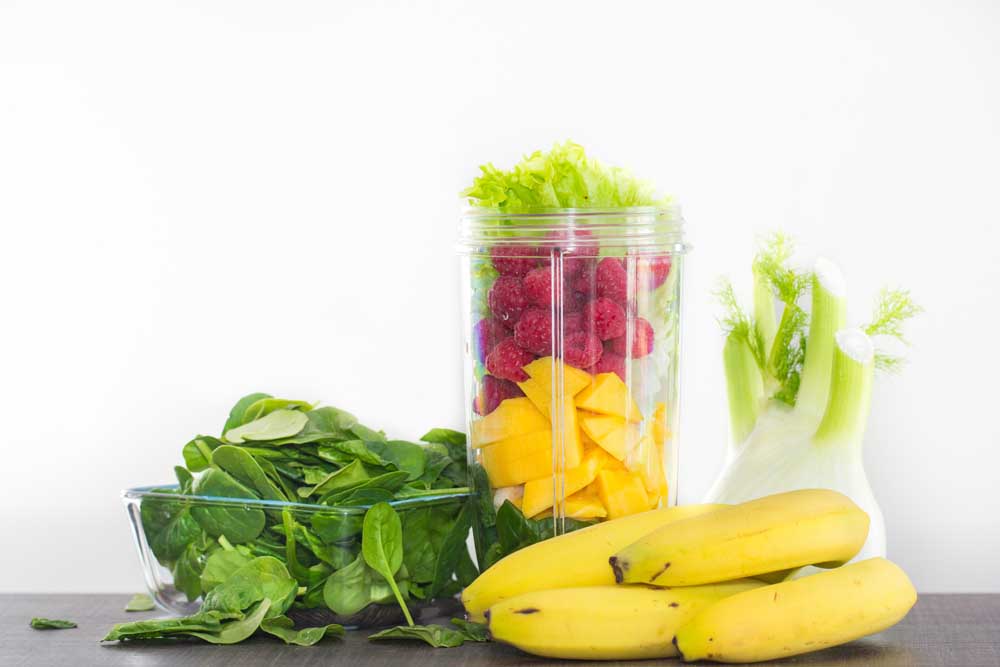Use juicing for diet variety
Published 12:00 am Friday, June 22, 2018

- While juicing can help you to incorporate a variety of fruits and vegetables into your diet, be sure to find fiber in other places.(Dreamstime)
Q: Is juicing as healthy as some proclaim, or are nutrients lost in the process?
A: Juicing – extracting the juice from fresh fruits and vegetables – can be a good way to add nutrients to your diet. If you struggle to eat the recommended five to nine servings of fruits and vegetables each day, juicing can help get there.
The good news is juice contains most of the vitamins, minerals and plant chemicals (phytonutrients) found in whole fruit. Juicing may help you incorporate a broader variety of fruits and vegetables in your diet, such as kale or tropical fruits.
However, juice shouldn’t be the only way to get nutrients. Whole fruits and vegetables contain healthy fiber, usually lost during juicing — especially if the skin and pulp are removed. Dietary fiber aids in digestion and may improve blood cholesterol levels and lower the risk of heart disease. Fiber helps you feel full, which can help with weight control.
Some promote juicing as a quick way to lose weight. However, a diet containing only fruits and vegetables isn’t balanced. Be sure you’re meeting your needs for fiber, protein, calcium, iron and healthy fats. Do this by incorporating juicing into a healthy-eating plan that includes various whole grains, low-fat dairy products, lean protein sources, and whole fruits and vegetables.
Juicing in moderation is generally healthy, but certain types of juice may not be appropriate for everyone. A juice made of mostly fruits can be high in carbohydrates and sugars, which can influence blood sugar levels. For people with kidney disease, fruits high in potassium, like melons and bananas, can cause complications and may need to be avoided.
Juicing also can be a significant source of calories, depending on the contents and the portion size. Without the fiber to keep you feeling full, you may find you’re hungry sooner. These create a recipe for potential weight gain.
Here are steps you can take to make your juice is as healthy as possible:
Limit added sugars. Some juice recipes call for sugar, honey or other added sweeteners. The typical American diet already includes too much added sugars. Try to eliminate or minimize these additions. Added sugars contribute to calories and weight gain. They’re especially common in store-bought fruit drinks.
Consider a blender. Blending the edible parts of fruits produces a drink with more fiber and other nutrients. If the result is too thick, add a little water.
Handle produce safely. Wash all fruits and vegetables before use — even if you plan to peel the produce. Take extra caution with precut produce and any kind of sprout, which are more likely to harbor dangerous bacteria like E. coli.
Use the pulp elsewhere. Try adding the leftover pulp from juicing to soups or baked goods to get more fiber.
Opt for pasteurized juice. When buying juice from a store, choose a pasteurized juice, to prevent the likelihood of foodborne illness. Most juice in stores is pasteurized to kill harmful bacteria. Refrigerate products that aren’t pasteurized. These products are required to carry a warning label. Since juice sold in restaurants doesn’t have the same labeling, ask if the product has been pasteurized.
If you’re not sure whether juicing is a healthy option for you, talk to your health care provider or a dietitian.






